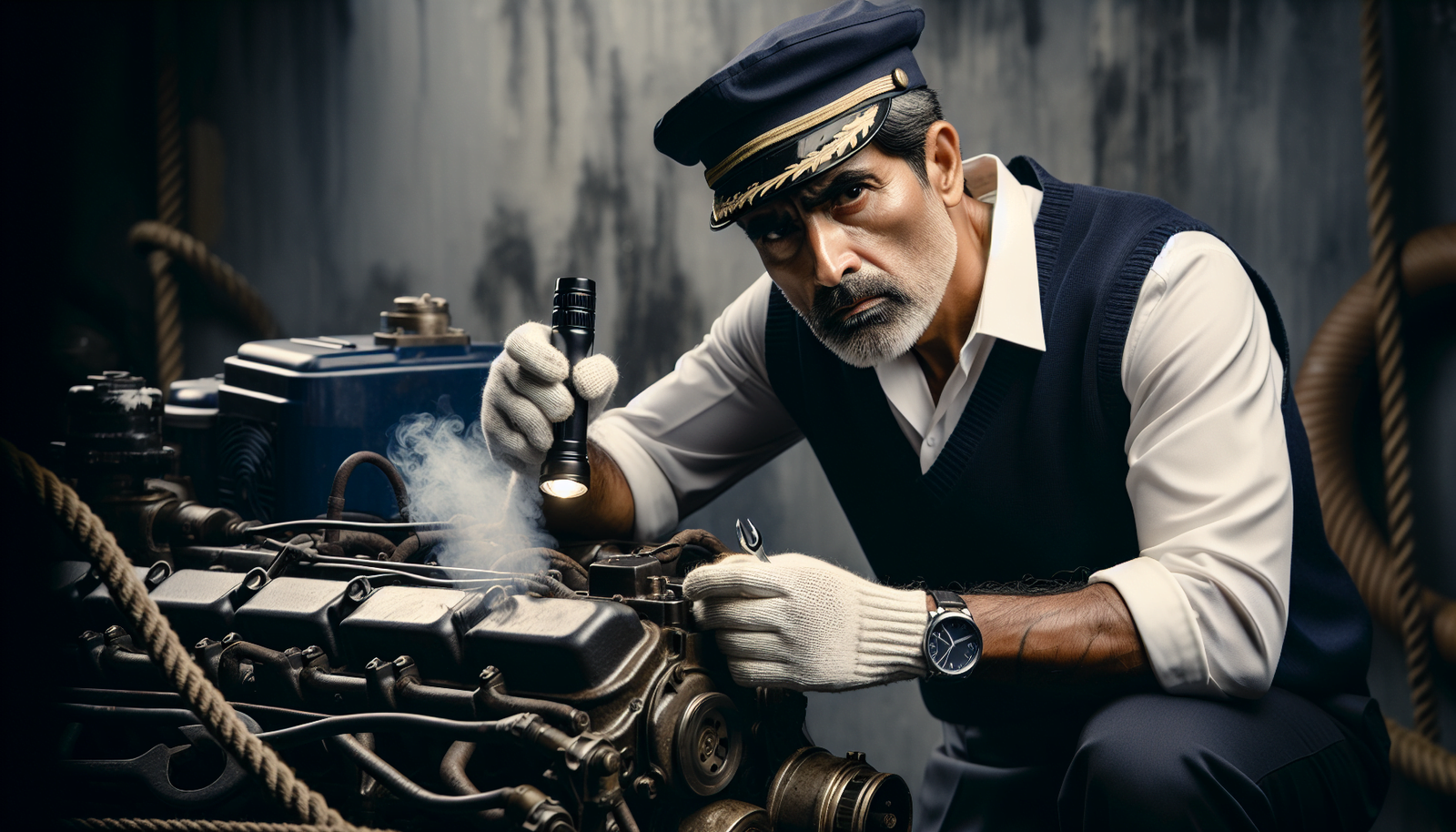Picture this; it’s a beautiful day, the sun is kissing your skin as you prepare for a relaxing day out on the water. But just as you’re about to set sail, your boat’s engine starts giving you problems, specifically exhaust issues. In the article ahead, we’re not just going to help you identify these problems, but walk through the process of troubleshooting and resolving boat engine exhaust issues. By the end, you’ll be equipped with the knowledge you need to get your boat back in working order and continue enjoying your day at sea. So, let’s get your boat back in ship shape, shall we?

Understanding Boat Engine Exhaust Function
Before we delve into troubleshooting the specifics, it’s important to have an understanding of the boat engine exhaust system’s function. The exhaust system is more complex than you might initially think, with several key components and roles that ensure your outboard runs smoothly and efficiently.
Basic components of an exhaust system
The exhaust system on your boat consists of several primary parts. The exhaust manifold, which connects directly to the engine block, collects exhaust gases produced during the combustion process. These gases travel into the exhaust pipe, which leads to the exhaust resonator and eventually out of the system via the exhaust tip. The resonator works to reduce the noise produced by the escaping gases. Another critical component, especially for boats, is the water pump, which cools the exhaust gas before it leaves the system, preventing overheating and potential damage.
The role of the exhaust in an engine system
Your exhaust system serves a few crucial roles in your boat engine system. Its main function is to vent the exhaust gases produced during combustion safely and efficiently away from the engine, thereby keeping the engine clean and preventing potential hazards. At the same time, the exhaust system reduces the noise created by the escaping gases, offers a means to cool these gases with water, and helps to monitor the engine’s overall performance and health.
Understanding the sign of a healthy exhaust system
Knowing how a healthy exhaust system behaves can help you quickly identify any problems that may arise. The signs of a functioning exhaust system include a proper cycling of gases from the engine without any blockages, limited noise level controlled by the resonator, flowing of cooling water without any obstruction, and no excessive smoke output. Other signs include an absence of leaks or visible damage, steady engine power, and a reasonably cool temperature during operation.
Identifying Common Boat Engine Exhaust Issues
Even with proper maintenance, exhaust systems can sometimes fail or encounter issues. Understanding the common problems can help identify and rectify them promptly, preventing further damage or even hazardous situations.
Overheating
Overheating is a common issue with boat engines, often caused by a malfunctioning cooling system or blockages in the exhaust system. If your engine is running hotter than usual or constantly overheating, it may signify a problem in the exhaust system needing immediate attention.
High smoke output
An increase in smoke output from your exhaust can suggest a range of issues, from minor ones such as poor-quality fuel to severe problems like a damaged piston or cylinder. Noticing the color and density of the smoke can also give a hint about the potential issue.
Excessive noise
Your boat’s exhaust system should operate relatively quietly thanks to the resonator. If you start to notice an increase in noise, especially a metallic or popping sound, it could indicate a problem such as an exhaust leak or blockage.
Reduced engine power
If your boat’s engine power is significantly reduced, an efficient exhaust system can often be the culprit. Reduced power may result from an exhaust blockage, air leak, or even a damaged exhaust manifold.

How to Inspect Your Boat Engine Exhaust
Self-inspections are critical in understanding the health of your exhaust system. However, they must be conducted correctly to ensure accurate conclusions and prevent any unnecessary damage.
Checking for visible signs of damage
Conduct a thorough visual inspection of your exhaust system. Look for any rust, physical damage like cracks or holes, and any signs of leaks, such as water or exhaust marks. Likewise, pay attention to the condition of your gasket, ensuring it’s intact and free from wear or damage.
Ensuring adequate exhaust gas flow
Check the exhaust tip and listen for any irregularities in the exhaust flow. It should be steady and consistent. An uneven flow can imply an obstruction within the exhaust system.
Verifying that water cooling is functioning
Ensure the water pump is functioning correctly and the cooling water is flowing without any obstructions through the exhaust system. Any impairment to this can lead to overheating and potential damage.
Details on Overheating
Overheating is a critical problem that can lead to significant damage if not addressed promptly. Understanding its causes, effects, and resolutions is paramount for your boat engine’s overall health.
Causes of engine overheating
Overheating in boat engines is often caused by an inefficient cooling system—water not flowing properly, thermostat issues, or a broken water pump. Additionally, blockages in the exhaust system or damaged exhaust manifolds can cause overheating.
How overheating affects the exhaust system
Overheating can cause wide-ranging damage to your boat’s exhaust system. It can lead to warped or cracked parts, resulting in leaks. Over time, this can further lead to internal engine damage, ultimately affecting the performance and longevity of your boat.
Steps to resolve overheating problems
Resolving the issue of overheating involves addressing its causes. It could require replacing a faulty thermostat or fixing blockages within the cooling or exhaust system. Sometimes, it might even necessitate replacing the damaged exhaust manifold or cooling pump.

